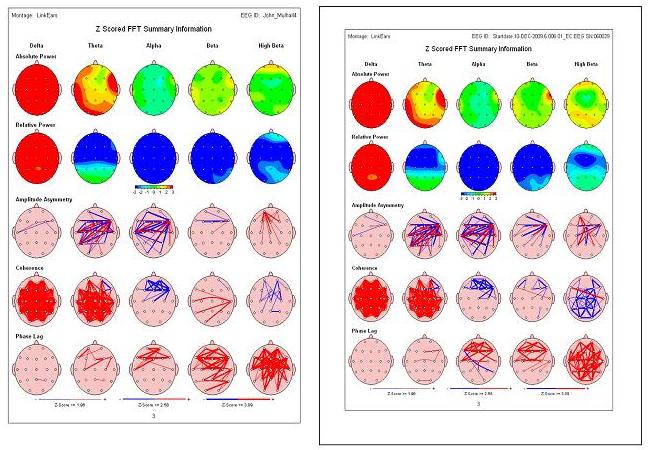One of the attached articles shows results of a side-by-side test of the Discovery and the NeuroPulse EEG by Nancy Wigton.
Another article shows results of side-by-side testing of the Discovery and the Mitsar EEG by Joan Ordmandy. A second Mitsar comparison by Bill Brubaker has also been added.
Another article shows results of side-by-side testing of the Discovery and the Deymed by Doug Reitmeyer.
Another article uses data from Discovery and Mindset sent in by an academic lab that thought there was a difference, but that was validated by more careful artifacting of the data. Refer to the related article “Guidelines for comparing EEG machines” for more details of how to conduct such tests properly.
In comparing, it is considered ideal to see “identical maps”. This happens in many cases. However, this is akin to taking two successive snapshots of a fish tank full of live fish, and expecting to see the same picture. Therefore, it is more reasonable to look for “the same overall picture” or “the same judgement and recommendations” even if the maps are not identical. Another issue is that the person’s EEG can actually change over 5-10 minutes, so the “A-B” comparison may be affected by changes in drowsiness, boredom, etc.
Some small differences may be attributed to the equipment. For example, Deymed, with its reference between Fz and Cz, shows less frontal beta coherence, absolute power, and phase in high beta, when compared with a linked ears or virtual linked ears reference, as used by other equipment. However, by careful choice of referencing and artifacting, comparable maps should always be achievable.






